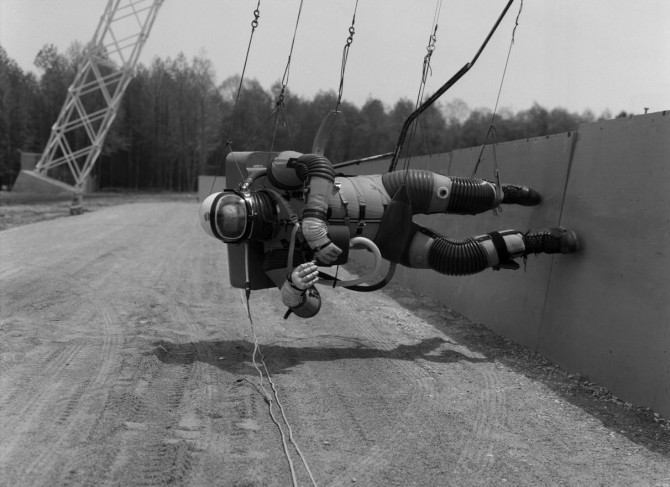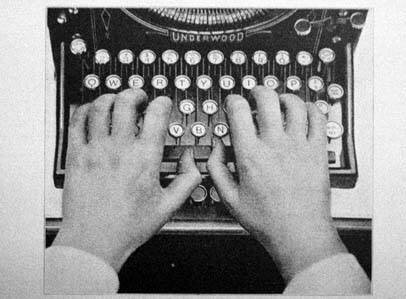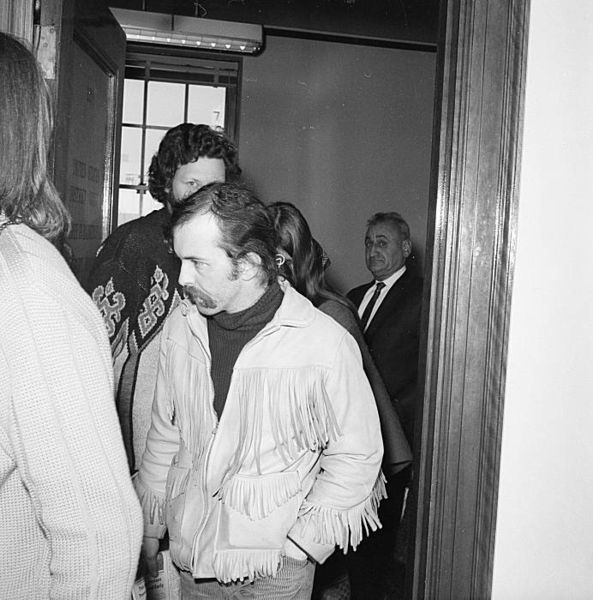In the future, endings will not only be happy but also brutally efficient. Presenting the high-speed bot hand from the Ishikawa Komuro Lab.
The opening of “The Most Important Education Technology in 200 Years,” Antonio Regalado’s MIT’s Technology Review article about the advent of limitless admissions:
“If you were asked to name the most important innovation in transportation over the last 200 years, you might say the combustion engine, air travel, Henry Ford’s Model-T production line, or even the bicycle. The list goes on.
Now answer this one: what’s been the single biggest innovation in education?
Don’t worry if you come up blank. You’re supposed to. The question is a gambit used by Anant Agarwal, the computer scientist named this year to head edX, a $60 million MIT-Harvard effort to stream a college education over the Web, free, to anyone who wants one. His point: it’s rare to see major technological advances in how people learn.
Agarwal believes that education is about to change dramatically. The reason is the power of the Web and its associated data-crunching technologies. Thanks to these changes, it’s now possible to stream video classes with sophisticated interactive elements, and researchers can scoop up student data that could help them make teaching more effective. The technology is powerful, fairly cheap, and global in its reach. EdX has said it hopes to teach a billion students.”
Tags: Antonio Regalado
From a particularly prescient 1993 memo by Microsoft’s Nathan Myhrvold about the tech revolution that was about to rework information distribution in a truly profound way:
“Gutenberg Reprised
If you grant that the world writes and makes decisions with PCs, what is next? The real answer is long and complex, but three of the key components are to read, communicate and beentertained. An even simpler way to describe this is to say that computing technology will become central to distributing information.
As a rule, distribution has much more pervasive effects than authoring. Improving life for the author of a document does not materially effect the size or nature of the audience that she can address, but changes in distribution have a dramatic effect. The clearest precedent is the invention of the printing press. Great works of science and literature – Euclid’s geometry, Plato and Horace, the Bhagavad-Gita, the Iliad and Icelandic Sagas, all- existed long before the printing press, so humans clearly were able to conceive them, but they had a very limited customer base. Monks and scribes spent lifetimes copying books by hand, while bards and minstrels memorized and orally repeated tales to spread and preserve them. No matter how cheaply one values their time, it was still a very expensive proposition which was the primary limiting factor in broadening the number of customers. If we could use a time machine to supply all those monks with PCs and Word for Windows, but limited the rate at which they could print to the same level of time and expense, it would make little difference – except perhaps for letting the monks channel their energies toward other fields.
When Gutenberg did change the economics of distribution, the world changed in a fundamental way. It is estimated that Europe had on the order of ten thousand books just prior to Johan’s invention – within fifty years it would have over eight million. Literacy became a key skill. The advent of mass media – through printed handbills – revolutionized politics, religion, science and literature and most other factes of intellectual life.
I believe that we are on the brink of a revolution of similar magnitude. This will be driven by two technologies – computing and digital networking. We’ve already discussed the change in computing technology, and that is certainly dramatic, but it is communications which really enables distribution.”
Tags: Nathan Myhrvold
Being buried alive is a primordial fear, but it may not be a baseless one. It’s not as easy to tell if someone’s dead as you might think. There have been different rules through the ages and new technologies cause a continued reassessment of those rules. Dick Teresi has written a book on the subject and now Peter Rothman has a smart piece at h+ on the ever-changing nature of life’s terminus. The opening:
“Black or white. Alive or dead. Right?
In reality death is not well defined and the definition of death has changed substantially over time.
H.P Lovecraft famously wrote, ‘That is not dead which can eternal lie. Yet with strange aeons even death may die.‘ This amounts to a pretty good summary of our current philosophical understanding of death. Death is simply the condition wherein you can not be brought back to life. If you can be brought back, then you weren’t really dead.
The Stanford Encyclopedia of Philosophy provides us a few examples of more nuanced definitions, for example one might suggest that death is ‘the irreversible cessation of organismic functioning’ or the ‘irreversible loss of personhood.’ These amount to circular definitions that really don’t tell us anything specific about how to decide when someone is dead. What is ‘organismic functioning’ and how do we know when it is happening? Personhood is of course mostly a legal definition pertaining to rights which are terminated upon death. But if you are brought back to life, you weren’t really dead.
And we’ve been burying people alive for a long time.” (Thanks Browser.)
Tags: Dick Teresi, Peter Rothman
Gary Numan performing his 1978 techie cautionary tale, “M.E.,” in which he envisioned the Singularity arriving and then running out of juice.
And M.E. I eat dust
We’re all so run down
I’d call it my death but I’ll only fade away
And I hate to fade alone
Now there’s only M.E.
We were so sure
We were so wrong
Now it’s over, but there’s no one left to see
And there’s no one left to die
There’s only M.E.
Why should I care?
Why should I try?
Oh no, oh no, I turned off the pain
Like I turned off you all
Now there’s only M.E.
Tags: Gary Numan
From the July 26, 1866 Brooklyn Daily Eagle:
“Michigan–We are indebted to Dr. William Elliott of this place, for a description of a double child, born in this village, having one head with two faces, two noses, four eyes, two mouths and two chins. The faces are right opposite each other. Among the many freaks of nature on record, we believe this is the most wonderful known. The fetus has been carefully preserved and will, we understand, be deposited in the museum of the medical department of the University of Michigan.”
Tags: Dr. William Elliott
I won’t be putting up a “Highlights From Yet Another Week Of Afflictor” post today since my connectivity was (and still is) so sketchy in wake of Hurricane Sandy, and I added very few things over the past few days. I’ll include the stuff from this week in next week’s “Highlights” post.
From the July 5 1899 Brooklyn Daily Eagle:
“The indelicacy of the police of the Fulton Street station in interfering with the morning ablutions of a woman made Mary Sheridan much more indignant than she was over the simple fact that she had been placed under arrest and hauled before Magistrate Brenner in the Adams Street court this morning. The fact that the ablutions in question had been daily made by Mary at the horse trough on Washington Street, near the bridge, had suggested to the police the necessity of doing something about her case. They had tried to drive her away, for she seemed to be otherwise a very harmless person. She never got tipsy and her inherent cleanliness under other conditions would be commendable. Mary would not be driven away. The habit of washing at the horse trough had become too strong and there was nothing to do about it after a while but to arrest her as a vagrant.”
Tags: Magistrate Brenner, Mary Sheridan
From Timothy Taylor’s analysis of driverless cars at the Conversable Economist, a passage about the way the function (and meaning) of automobiles may change:
“Driverless cars might be faster, but in addition, they open up the possibility of using travel time for work or relaxation. Your car could become a rolling office, or a place for watching movies, or a place for a nap. ‘An automated transportation system could not only eliminate most urban congestion, but it would also allow travelers to make productive use of travel time. In 2010, an estimated 86.3 percent of all workers 16 years of age and older commuted to work in a car, truck, or van, and 88.8 percent of those drove alone … The average commute time in the United States is about 25 minutes.
Thus, on average, approximately 80 percent of the U.S. workforce loses 50 minutes of potential productivity every workday. With convergence, all or part of this time is recoverable. Self-driving vehicles may be customized to serve the needs of the traveler, for example as mobile offices, sleep pods, or entertainment centers.’ I find myself imagining the overnight road-trip, where instead of driving all day, you sleep in the car and awake at your destination.” (Thanks Browser.)
Tags: Timothy Taylor
getting physicals from college adult very important (new york)
those of you needing a physical: college adult checking airway breathing, circulation, your genitals, body, anus, prostate, percussion, palpitation and auscultation. can give you that full physical if interested. to make sure everything is working properly and fine there.
Berndnaut Smilde and his indoor clouds made Time‘s “Best Inventions of 2012.” From the blurb: “The Dutch artist Berndnaut Smilde has developed a way to create a small, perfect white cloud in the middle of a room. It requires meticulous planning: the temperature, humidity and lighting all have to be just so. Once everything is ready, Smilde summons the cloud out of the air using a fog machine. It lasts only moments, but the effect is dramatic and strangely moving.”
Tags: Berndnaut Smilde

Joe Scarborough: Glasses aren’t only for smart people anymore.
Joe Scarborough is almost always wrong, but that doesn’t prevent him from being smug and loud. The MSNBC puddinghead (and, oh christ, former congressperson!) likes to cherry pick political polls, especially the less helpful national ones, and sell lazy narratives based on one or two surveys. Lately he’s been peddling the idea that the Presidential election will either be a razor-thin victory for Obama or a rout for Romney, though the statistical evidence doesn’t suggest there’s any reason for the latter position.
Scarborough has lately taken aim at Five Thirty-Eight pollster Nate Silver whose numbers disagree with his dubious plotline. Because Silver is smart and perceived as liberal, he’s attacked by the right as underhanded in some way. A recent Politico article by Dylan Byers had numerous media figures figures assailing Silver as some sort of hack. He’s not. He’s a bright guy working off an objective model, and he was more accurate during the 2008 election than anyone. It doesn’t mean that he will be correct this time–he has Obama as a heavy favorite–but at least his views are based on hard evidence.
In the Politico article, Scarborough, a human whoopee cushion, labeled Silver as a “joke.” He attacked the analyst’s methodology without offering a better system because he doesn’t have one–he just makes shit up. But the cable babbler went further, suggesting that Silver was an “ideologue,” a partisan in the tank for Obama, trying to nudge the election in the direction of his candidate. Without having any proof of such behavior, it was a pretty scurrilous attack.
When Scarborough endlessly derided Team Obama’s Bain ads in the early summer as being tone-deaf and ineffectual, he was wrong. The commercials had the intended impact. But I don’t recall Silver (or anyone, really) accusing the Republican host of being an ideologue for his opinion. Anything could happen in this election, sure, but if Scarborough is right it would have to be by accident. And even then the way he portrayed Silver will never be right.•
Tags: Joe Scarborough, Nate Silver
From Erik Davis’ Aeon essay about renewed research into psychodelic drugs, a passage about the way we tend to characterize drugs based on our own fears and desires:
“When the legendary acid chemist Augustus Owsley Stanley III was pressing his famously pure LSD into pills for people such as Ken Kesey and the Merry Pranksters in the 1960s, he dyed the batches different colours. The colours led to various brand names — Purple Haze, Blue Cheer — which in turn were linked, experientially, to different sorts of effects, even though the quality and amount of acid was effectively the same. Something similar is happening to cannabis today, at least in an increasingly deregulated America, where the red-hot market for ‘medical’ marijuana products has led to a complex and overhyped mythology of targeted effects.
Of course, some of the most powerful stories about psychoactives are told by the state, even if those stories are frequently garbled and contradictory. In the US, for example, the pleasant Polynesian rootkava-kava is available on the herbal shelves, while the pleasant Yemeni stimulant khat is controlled. In the UK, the reverse is true. Of course, the stories told about psychedelics like LSD were more demonising, and in 1967 the US government classified it as a highly controlled substance, a year after it became illegal in California. This regulatory act — a new story, if you will — thrust the compound even deeper into the underground, where its meanings proliferated along a myriad of spiritual, artistic, musical, sexual and social vectors that continue to morph their way through society and culture to this day. However, by definitively transforming LSD into an ‘illegal drug’, the state’s story also brought to a halt a wide range of legitimate, board-certified psychological and pharmacological studies that, in their time, might have reframed Hofmann’s molecule into narratives not so heavily freighted with the baggage of countercultural values.
Today, the meaning of LSD and other psychedelics is once again up for grabs.”
Tags: Erik Davis, Owsley Stanley
Jerry Brown, during his his hippie-ish “Governor Moonbeam” days in 1981, chatting with Merv Griffin. Of course, he’s also the current California Governor. I have never understood exactly where Brown is coming from, what his core is, and I doubt he could articulate it very well, either. But that amorphousness hasn’t prevented him achieving successful governance.
Tags: Jerry Brown, Merv Griffin
I only suffered one little loss in the storm. My 1000 or so books were stored in the basement of a relative’s house, which was in one of those ominous-sounding low-lying, coastal areas. Those volumes now swim with the fishes. That leaves me in possession of only 24 books which I just read, am reading or about to read.
Whenever I lose any possession, I always have a feeling of lightness. Without the weight, I just might float away. Should l use this opportunity to switch to an e-reader for all my in-print reading? Maybe.
I don’t fret at all about the loss. I think it’s amazing I’ve had the opportunity to read so many great books by so many brilliant people. How enriched my life has been because of it. What privilege.
It makes me think of all those in the world who don’t have that opportunity because of poverty or politics or bias. All that wasted potential.
••••••••••
“How many little Albert Eisteins / Cut down in their prime?”:
I’m back! Did you miss me? No?!? But I missed you! Not fair.
So, I obviously haven’t been connected to the Internet for days because of the East Coast Katrina known as Hurricane Sandy. Easily the worst storm in New York City during my lifetime. We’ve had other ferocious weather, to be sure, but never this type of sustained assault. It felt like it went on forever. Dozens of people died, and as horrible as that is, I’m (very happily) surprised more didn’t. I have some displaced relatives whose homes took serious damage. Now they have to deal with the overtaxed folks at FEMA and insurance companies and all that fun stuff while still trying to deal with their workaday lives. It particularly sucks for the older ones.
I hope all of you readers who were in the path of the storm are well.
This is the first time since the Internet became a thing–the thing–that I haven’t logged on for a day, let alone several days. I missed you, Internet. I missed you, Second Brain. Let us never part again.
Thanks to all of you for your patience. Just a couple of posts today, but I’ll return tomorrow to continue mocking horrible people, letting you know about elaborate monkey funerals from 1895, and putting up posts about all the cool, futuristic stuff that will exist long after we’re all dead.
You know, the same crap that’s always on this blog, just worded slightly differently.
Darren
P.S.: To that fellow passenger on a Brooklyn bus on Wednesday who whined repeatedly that the bus was “too warm” just hours after some of our neighbors drowned and were electrocuted, go fuck yourself.
At some point in the future, humans will think of us and our way of life as “backwards,” and they will be right. But some things will be particularly difficult to comprehend.
- Carnivorism: Parents will tell their children that humans used to eat other animal flesh, but it will be difficult to convince them. People will look back on us as we view cannibals and cavemen. Everyone will be grossed out.
- Invasive surgery (especially plastic surgery): Scalpels cutting through flesh and causing bloodshed? Seriously? And some people actually chose elective surgery for non-essential reasons! All cures and treatments will be non-invasive and the product of genetic engineering. Our age of medical miracles will be thought of as the Dark Ages.
- Internal gestation: Sex will go on apace, but birth control will be perfected, babies will be planned with precision and all new life will be “hatched” and nurtured in vitro in artificial wombs. Pictures of pregnant women will be needed to convince our future selves that babies were carried for nine months and childbirth actually occurred.
- Factory workers: There were people who actually use to manufacture things by hand and with primitive machinery before robotics did all the work. The future will look back on these people as having lived horrid existences, failing to understand the benefits such work brought, even beyond the material.
- Prisons: We took humans who behaved badly and warehoused them in conditions that made them worse before releasing them back into the general population. People of the future will look back on us in disgust. They will have a completely different system. It will likely be just as bad. People even further in the future will look back on them in disgust.
The technology for driverless cars has been achieved, so the National Highway Traffic Safety Administration is preparing to lay down federal guidelines for these vehicles. From George Kennedy at Autoblog:
“According to the report NHSTA administrator David Sctrickland says the technology could possibly save ‘thousands of lives.’ It was also reported that NHTSA has been in talks with a number of companies, including Google, regarding the implementation and development of this technology. Google has been testing its own fleet of driverless cars, logging over 300,000 miles on American roads. The tech company says autonomous vehicles could be made available to the public in the next ten years.
The technology has profound implications on the automotive industry and car culture. Strickland calls it a “game changer” and could make it possible for blind drivers or senior citizens who would otherwise have their licenses revoked, the ability to get around town. The savings from cutting down on congestion could result in as much as $100 billion in fuel savings.”
Tags: David Sctrickland, George Kennedy
From the April 5, 1885 Brooklyn Daily Eagle:
“Philadelphia–A subject, apparently a young girl of 15, appeared for a clinical operation at Jefferson Medical College a short time ago. The patient wore short dresses, looked like a young school miss, and had the manners of a girl. The trouble with the patient was an inability to retain secretions of the kidneys. Dr. W.H. Pancoast made an examination and discovered two exceedingly interesting facts: First, that his subject was not, as the parents had always supposed, a girl, but a boy, and that he had been born minus a bladder. The doctor then proceeded to supply an artificial bladder, a surgical feat first accomplished by his father many years ago and now not an uncommon operation. But the parents refused to credit the facts recited by the doctor and would not keep the subject in boy’s attire, dressed in which the professor had returned him to them. A further operation was made at the request of the parents. That was done last week, and so fully developed the other organs that doubt was no longer possible. The lad has been given a boy’s name in exchange for the female one with which he was christened.”
Tags: Dr. W.H. Pancoast
Modern India is the uneasy mix of two countries: the emerging global superpower and the corrupt slum. Can advances in high-tech also advance the majority of people, or is it a nation destined to be a robust body held back by a long tail of neglect and abuse? From Erich Follath at Spiegel:
“Almost no other country has as many cell phone users; almost nowhere is the communications industry growing faster. Today, Indians can choose from among more than 400 private television channels. The subcontinent is also making great strides in renewable energy. Indeed, Suzlon, the world’s fifth-largest wind turbine manufacturer, headquartered in the western city of Pune, recently enlarged its ownership stake in the German wind turbine company REPower and now plans to create more than 100 new jobs in Germany.
India is now the world’s largest weapons importer. It has become a self-confident player among leading nations and is now aggressively seeking a seat on the United Nations Security Council. It’s also a nuclear power that has expanded its arsenal of warheads and has no intention of signing the Nuclear Non-proliferation Treaty. The Indians sent satellites into space some time ago, and only last week did they announce plans for a mission to Mars. Prime Minister Singh described it as ‘a giant step for us in the field of science and technology.’
That’s the one India, the high-tech powerhouse of a rising global power, backed up by numbers and proof of its prowess. But then there is the other India: where one in three of the world’s malnourished children lives; where two-thirds of the population lives on less than $2 a day; where half the population has no access to toilets and 25 percent still cannot read and write. It’s also a country where the power supply is so scandalously unreliable that, in late July, almost 700 million people were without lights and electricity for two days, the railroads stopped running, factories stood idle and some hospitals were crippled.
Is India on the road to becoming a superpower? Or is it condemned to forever remain a developing-world power, on the outside looking in?” (Thanks Next Big Future.)
Tags: Erich Follath

























